TB-25N Mitchell Video - "Heavenly Body" and "Executive Sweet" - From "Steel Warriors" DVD
|
|
|
|
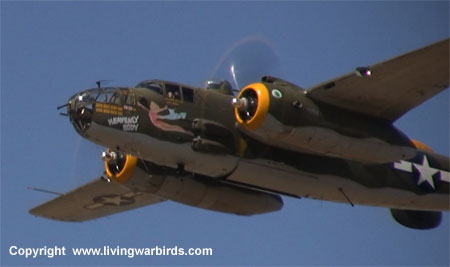 |
Manufacturer: North American Model: SNJ-4 Year built: 1943 Serial Number: 88-9830 Number of Seats: 2 Number of Engines: 1 Engine Type: Reciprocating Engine: P&W R1340 Series |
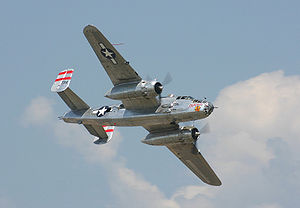 (Image: North American B-25
Mitchell.)
(Image: North American B-25
Mitchell.)
The North American B-25 Mitchell (NA-62) was an American twin-engined medium bomber manufactured by North American Aviation. It was used by many Allied air forces, in every theater of World War II, as well as many other air forces after the war ended, and saw service across four decades.
The B-25 was named in honor of General Billy Mitchell, a pioneer of U.S. military aviation. The B-25 is the only American military aircraft named after a specific person. By the end of its production, nearly 10,000 B-25s in numerous models had been built. These included a few limited variations, such as the US Navy's PBJ-1 patrol bomber and the Army Air Forces' F-10 photo reconnaissance aircraft.
Design and development
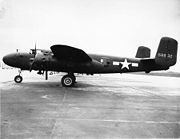 (Image: Flight Performance School also included work in evaluating the performance of this B-25 Mitchell medium bomber.)
(Image: Flight Performance School also included work in evaluating the performance of this B-25 Mitchell medium bomber.)
The B-25 was a descendant of the earlier XB-21 (North American-39) project of the mid-1930s. Experience gained in developing that aircraft was eventually used by North American in designing the B-25 (called the NA-40 by the company). One NA-40 was built, with several modifications later being done to test a number of potential improvements. These improvements included Wright R-2600 radial engines, which would become standard on the later B-25.
In 1939, the modified and improved NA-40B was submitted to the United States Army Air Corps for evaluation. This aircraft was originally intended to be an attack bomber for export to the United Kingdom and France, both of which had a pressing requirement for such aircraft in the early stages of World War II. However, those countries changed their minds, opting instead for the also-new Douglas DB-7 (later to be used by the US as the A-20 Havoc). Despite this loss of sales, the NA-40B re-entered the spotlight when the Army Air Corps evaluated it for use as a medium bomber. Unfortunately, the NA-40B was destroyed in a crash on 11 April 1939. Nonetheless, the type was ordered into production, along with the Army's other new medium bomber, the Martin B-26 Marauder.
Early production
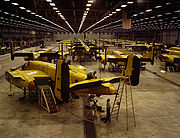 (Image: Mitchell production in Kansas City in 1942.)
(Image: Mitchell production in Kansas City in 1942.)
An improvement of the NA-40B, dubbed the NA-62, was the basis for the first actual B-25. Due to the pressing need for medium bombers by the Army, no experimental or service-test versions were built. Any necessary modifications were made during production runs, or to existing aircraft at field modification centers around the world.
A significant change in the early days of B-25 production was a re-design of the wing. In the first nine aircraft, a constant-dihedral wing was used, in which the wing had a consistent, straight, slight upward angle from the fuselage to the wing tip. This design caused stability problems, and as a result, the dihedral angle was nullified on the outboard wing sections, giving the B-25 its slightly gull wing configuration. Less noticeable changes during this period included an increase in the size of the tail fins and a decrease in their inward cant.
A total of 6,608 B-25s were built at North American's Fairfax Airport plant in Kansas City, Kansas.
A descendant of the B-25 was the North American XB-28, meant to be a high-altitude version of the B-25. Despite this premise, the actual aircraft bore little resemblance to the Mitchell. It had much more in common with the B-26 Marauder.
Operational history
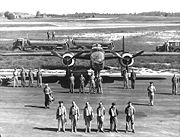 (Image: Lt. Peddy and crew, showing how many people were required to keep a B-25 flying.)
(Image: Lt. Peddy and crew, showing how many people were required to keep a B-25 flying.)
The B-25 first gained fame as the bomber used in the April 18, 1942 Doolittle Raid, in which 16 B-25Bs, led by the legendary Lt. Col. Jimmy Doolittle, took off from the carrier USS Hornet and successfully bombed Tokyo and four other Japanese cities without loss. However, 15 subsequently crash-landed en route to recovery fields in Eastern China. These losses were the result of the task force being spotted by Japanese fishing vessels forcing the bombers to take off 600 miles (970 km) early, fuel exhaustion, stormy nighttime conditions with zero visibility, and lack of electronic homing aids at the recovery bases. Only one landed intact; it came down in the Soviet Union, where its five-man crew was interned and the aircraft confiscated. Of the 80 aircrew, 69 survived their historic mission and eventually made it back to American lines.
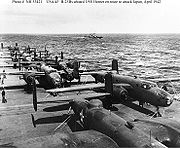 (Image: Doolittle Raid B-25Bs aboard USS Hornet.)
(Image: Doolittle Raid B-25Bs aboard USS Hornet.)
Following a number of additional modifications, including the addition of Plexiglas windows for the navigator and radio operator, heavier nose armament, and de-icing and anti-icing equipment, the B-25C was released to the Army. This was the second mass-produced version of the Mitchell, the first being the lightly-armed B-25B used by the Doolittle Raiders. The B-25C and B-25D differed only in location of manufacture: -Cs at Inglewood, California, -Ds at Kansas City, Kansas. A total of 3,915 B-25Cs and -Ds were built by North American during World War II.
 (Image: A B-25C being refueled.)
(Image: A B-25C being refueled.)
Although the B-25 was originally designed to bomb from medium altitudes in level flight, it was used frequently in the Southwest Pacific theater (SWPA) on treetop-level strafing and parafrag (parachute-retarded fragmentation bombs) missions against Japanese airfields in New Guinea and the Philippines. These heavily-armed Mitchells, field-modified by Major Paul I. "Pappy" Gunn, were also used on strafing and skip-bombing missions against Japanese shipping trying to re-supply their land-based armies. Under the leadership of Lt. Gen. George C. Kenney, B-25s of the Fifth and Thirteenth Air Forces devastated Japanese targets in the SWPA from 1942 to 1945, and played a significant role in pushing the Japanese back to their home islands. B-25s were also used with devastating effect in the Central Pacific, Alaska, North Africa, Mediterranean and China-Burma-India (CBI) theaters.
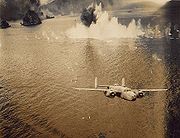 (Image:
B-25 of 13th Squadron, 3rd Bomb Group, on low-level "skip-bombing" mission in New Guinea)
(Image:
B-25 of 13th Squadron, 3rd Bomb Group, on low-level "skip-bombing" mission in New Guinea)
Because of the urgent need for hard-hitting strafer aircraft, a version dubbed the B-25G was developed, in which the standard-length transparent nose and the bombardier were replaced by a shorter, solid nose containing two fixed .50-calibre machine guns and a 75 mm M4 cannon, one of the largest weapons fitted to an aircraft, similar to the experimental British Mosquito Mk. XVIII, and German Ju 88P heavy cannon carrying aircraft. The cannon was manually loaded and serviced by the navigator, who was able to perform these operations without leaving his crew station just behind the pilot. This was possible due to the shorter nose of the G-model and the length of the M4, which allowed the breech to extend into the navigator's compartment.
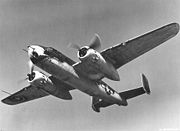 (Image: B-25G Mitchell from the AAF Tactical Center, Orlando AAB, Florida, 17 April 1944.)
(Image: B-25G Mitchell from the AAF Tactical Center, Orlando AAB, Florida, 17 April 1944.)
The B-25G's successor, the B-25H, had even more firepower. The M4 gun was replaced by the lighter T13E1, designed specifically for the aircraft. The 75 mm gun fired at a muzzle velocity of 2,362 ft/s (about 720 m/s). Due to its low rate of fire (approximately four rounds could be fired in a single strafing run) and relative ineffectiveness against ground targets, as well as substantial recoil, the 75 mm gun was sometimes removed from both G and H models and replaced with two additional .50-caliber machine guns as a field modification. The -H also mounted four fixed forward-firing .50 in (12.7 mm) machine guns in the nose, four more fixed ones in forward-firing cheek blisters, two more in the top turret, one each in a pair of new waist positions, and a final pair in a new tail gunner's position. Company promotional material bragged the B-25H could "bring to bear 10 machine guns coming and four going, in addition to the 75 mm cannon, a brace of eight rockets and 3,000 pounds of bombs."
The B-25H also featured a redesigned cockpit area, with the top turret moved forward to the navigator's compartment (thus requiring the addition of the waist and tail gun positions), and a heavily modified cockpit designed to be operated by a single pilot, the co-pilot's station and controls deleted, and the seat cut down and used by the navigator/cannoneer, the radio operator being moved to the aft compartment, operating the waist guns. A total of 1,400 B-25Gs and B-25Hs were built in all.
The final version of the Mitchell, the B-25J, looked much like the earlier B, C and D, having reverted to the longer nose. The less-than-successful 75 mm cannon was deleted on the J model. Instead, 800 of this version were built with a solid nose containing eight .50 machine guns, while other J-models featured the earlier "greenhouse" style nose containing the bombardier's position. Regardless of the nose style used, all J-models also included two .50 caliber guns in a "fuselage package" located directly under the pilot's station, and two more such guns in an identical package just under the co-pilot's compartment. The solid-nose B-25J variant carried an impressive total of 18 .50s: eight in the nose, four in under-cockpit packages, two in an upper turret, two in the waist, and a pair in the tail. No other bomber of World War II carried as many guns. However, the first 555 B-25Js (the B-25J-1-NC production block) were delivered without the fuselage package guns, because it was discovered muzzle blast from these guns was causing severe stress in the fuselage; while later production runs returned these guns, they were often removed as a field modification for the same reason. In all, 4,318 B-25Js were built.
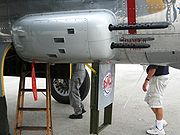 (Image: Closeup of an early model B-25 gun pod)
(Image: Closeup of an early model B-25 gun pod)
The B-25 was a safe and forgiving aircraft to fly. With an engine out, 60° banking turns into the dead engine were possible, and control could be easily maintained down to 145 mph (230 km/h). The tricycle landing gear made for excellent visibility while taxiing. The only significant complaint about the B-25 was the extremely high noise level produced by its engines; as a result, many pilots eventually suffered from various degrees of hearing loss.
The Mitchell was also an amazingly sturdy aircraft and could withstand tremendous punishment. One well-known B-25C of the 321st Bomb Group was nicknamed "Patches" because its crew chief painted all the aircraft's flak hole patches with high-visibility zinc chromate paint. By the end of the war, this aircraft had completed over 300 missions, was belly-landed half a dozen times and sported over 400 patched holes. The airframe was so bent, straight-and-level flight required 8° of left aileron trim and 6° of right rudder, causing the aircraft to "crab" sideways across the sky.
An interesting characteristic of the B-25 was its ability to extend range by using one-quarter wing flap settings. Since the aircraft normally cruised in a slightly nose-high attitude, about 40 U.S. gallons (150 l) of fuel was below the fuel pickup point and thus unavailable for use. The flaps-down setting gave the aircraft a more level flight attitude, which resulted in this fuel becoming available, thus slightly extending the aircraft's range.
Empire State Building accident
On Saturday, 28 July 1945, at 9:49 am (while flying in thick fog), a B-25D crashed into the north side of Empire State Building, hitting between the 79th and 80th floor. Fourteen people were killed — 11 in the building, along with Colonel William Smith and the other two occupants of the bomber. In part, it was due to this incident that towers 1 and 2 of the World Trade Center were designed to withstand the impact of a Boeing 707 aircraft.
Variants
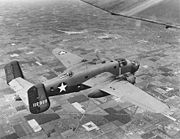 (Image: B-25C Mitchell)
(Image: B-25C Mitchell)
B-25
The first version of the B-25 delivered. It was so badly needed that no prototype stages were ordered. The first nine aircraft were built with
constant dihedral angle. Due to low stability, the wing was redesigned so that the dihedral angle was eliminated on the outboard section. (Number
made: 24.)
B-25A
Version of the B-25 modified to make it combat ready; additions included self-sealing fuel tanks, crew armour, and an improved tail gunner station.
No changes were made in the armament. Re designated obsolete (RB-25A designation) in 1942. (Number made: 40.)
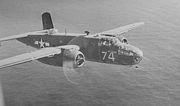 (Image: USAAF B-25C/D. Note the early radar fitted to the nose)
(Image: USAAF B-25C/D. Note the early radar fitted to the nose)
B-25B
Tail gunner eliminated; manned dorsal and remotely-operated ventral turrets added, each with a pair of .50-caliber machine guns. The ventral
turret was retractable, but the increased drag still reduced the cruise speed by 30 mph (48 km/h). 23 were delivered to the RAF as the Mitchell
Mk I. The Doolittle Raiders flew B-25Bs on their famous mission. (Number made: 120.)
B-25C
Improved version of the B-25B: upgraded from Wright R-2600-9 radials to R-2600-13 radials; de-icing and anti-icing equipment was added; the
navigator received a sighting blister; and nose armament was increased to two .50-caliber machine guns, one fixed and one flexible. The B-25C
model was the first mass produced B-25 version; it was also used in the United Kingdom as the Mitchell II, and in Canada, China, the Netherlands,
and the Soviet Union. First mass-produced B-25. (Number made: 1,625.)
B-25D
Identical to the B-25C. The only difference was that the B-25C was made in Inglewood, California, whereas the B-25D was made in Kansas City,
Kansas. First flew on 3 January 1942. (Number made: 2,290.)
XB-25E
Single B-25C modified to test de-icing and anti-icing equipment that circulated exhaust from the engines in chambers in the leading and trailing
edges and empennage. The aircraft was tested for almost two years, beginning in 1942; while the system proved extremely effective, no production
models were built that used it before the end of World War II. Many prop aircraft today use the XB-25E system. (Number made: 1, converted.)
XB-25F-A
Modified B-25C that tested the use of insulated electrical de-icing coils mounted inside the wing and empennage leading edges as a de-icing
system. The hot air de-icing system tested on the XB-25E was more practical. (Number made: 1, converted.)
XB-25G
Modified B-25C in which the transparent nose was replaced by a solid one, with two fixed .50-caliber machine guns and a 2.95-inch (75 mm) M4
Cannon, then the largest weapon ever carried on an American bomber. (Number made: 1, converted.)
B-25G
To satisfy the dire need for ground-attack and strafing aircraft, the B-25G was made following the success of the prototype XB-
25G. The production model featured increased armour and a greater fuel supply than the XB-25G. One B-25G was passed to the British, who gave it the
name Mitchell II that had been used for the B-25C. (Number made: 420.)
B-25H
An improved version of the B-25G. It featured two more fixed .50-caliber machine guns in the nose, and four in fuselage-mounted pods; the heavy
M4 cannon was replaced by a lighter 2.95-inch (75 mm) T13E1. (Number made: 1,000; number left flying in the world: 1.)
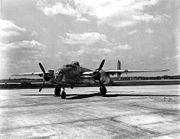 (Image: B-25J)
(Image: B-25J)
B-25J
The last production model of the B-25, often called a cross between the B-25C and the B-25H. It had a transparent nose, but many of the delivered
aircraft were modified to have a solid nose. Most of its 14–18 machine guns were forward-facing for strafing missions. 316 were delivered to the Royal Air Force as the Mitchell III. (Number made: 4,318.)
CB-25J
Utility transport version.
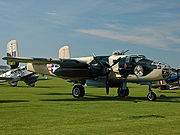 (Image: B-25J warbird)
(Image: B-25J warbird)
VB-25J
A number of B-25s were converted for use as staff and VIP transports. Henry H. Arnold and Dwight D. Eisenhower both used converted B-25Js as
their personal transports.
Trainer variants
Most models of the B-25 were used at some point as training aircraft.
TB-25D
Originally designated AT-24A (Advanced Trainer, Model 24, Version A). Trainer modification of B-25D. In total, 60 AT-24s were built.
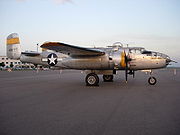 (Image: B-25J N345BG '44-86777')
(Image: B-25J N345BG '44-86777')
TB-25G
Originally designated AT-24B. Trainer modification of B-25G.
TB-25C
Originally designated AT-24C. Trainer modification of B-25C.
TB-25J
Originally designated AT-24D. Trainer modification of B-25J. Another 600 B-25Js were modified after the war.
TB-25K
Hughes E1 fire-control radar trainer (Hughes). (Number made: 117.)
TB-25L
Hayes pilot-trainer conversion. (Number made: 90.)
TB-25M
Hughes E5 fire-control radar trainer. (Number made: 40.)
TB-25N
Hayes navigator-trainer conversion. (Number made: 47.)
 (Image: B-25H Barbie III taxiing at Centennial Airport, Colorado)
(Image: B-25H Barbie III taxiing at Centennial Airport, Colorado)
U.S. Navy variants
PBJ-1C
Similar to the B-25C for the US Navy; often fitted with airborne search radar and used in the anti-submarine role.
PBJ-1D
Similar to the B-25D for the US Navy. Differed in having a single .50 caliber M2 in the tail turret and beam gun positions similar to the B-25H. Often fitted with airborne search radar and used in the anti-submarine role.
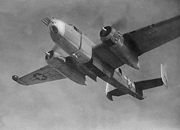 (Image: A PBJ-1H of VMB-613)
(Image: A PBJ-1H of VMB-613)
PBJ-1G
US Navy designation for the B-25G
PBJ-1H
US Navy designation for the B-25H
PBJ-1J
US Navy designation for the B-25J-NC (Blocks -1 through -35) with improvements in radio and other equipment. Often fitted with "package guns" and wingtip search radar for the anti-shipping/anti-submarine role.
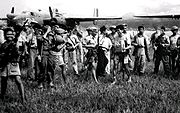 (Image: Two PBJ-1Js on Mindanao,1945)
(Image: Two PBJ-1Js on Mindanao,1945)
Specifications (B-25J)
General characteristics
Crew: six (two pilots, navigator/bombardier, turret gunner/engineer, radio operator/waist gunner, tail gunner
Length: 52 ft 11 in (16.1 m)
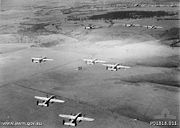 (Image: B-25 Mitchell bombers from No. 18 (NEI) Squadron RAAF on a training flight near Canberra in 1942)
(Image: B-25 Mitchell bombers from No. 18 (NEI) Squadron RAAF on a training flight near Canberra in 1942)
Wingspan: 67 ft
6 in (20.6 m)
Height: 17 ft 7 in (4.8 m)
Wing area: 610 sq ft (57 m²)
Empty weight: 21,120 lb (9,580 kg)
Loaded weight: 33,510 lb (15,200 kg)
Max takeoff weight: 41,800 lb (19,000 kg)
Powerplant: 2× Wright R-2600 "Cyclone" radials, 1,850 hp (1,380 kW) each
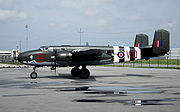 (Image: B-25J in 98 RAF Squadron markings)
(Image: B-25J in 98 RAF Squadron markings)
Performance
Maximum speed: 275 mph (239 knots, 442 km/h)
Cruise speed: 230 mph (200 knots, 370 km/h)
Combat radius: 1,350 mi (1,170 nm, 2,170 km)
Ferry range: 2,700 mi (2,300 nm, 4,300 km)
Service ceiling 25,000 ft (7,600 m)
Rate of climb: 790 ft/min (4 m/s)
Wing loading: 55 lb/sq ft (270 kg/m²)
Power/mass: 0.110 hp/lb (182 W/kg)
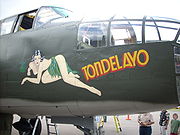 (Image: B-25D Tondelayo, registered N3476G and was serial number 44-28932)
(Image: B-25D Tondelayo, registered N3476G and was serial number 44-28932)
Armament
Guns: 12× .50 in (12.7 mm) machine guns
Rockets: 3,000 lb (1,360 kg) bombs + eight 5-inch high velocity aircraft rockets (HVAR)
Bombs: 6,000 lb (2,700 kg)
Popular culture
The B-25 is featured in the 1961 novel Catch-22 translated into the 1971 Catch-22 (film) which had a large number of B-25s in flying condition. The B-25 also had feature roles in the movies: Thirty Seconds over Tokyo (1944) (one pilot's account of the Doolittle Raid), Hanover Street (1979) based a fictional B-25 unit stationed in England, Forever Young (1992), following a B-25 test pilot's story both in the past and present, and Pearl Harbor (2001) which culminates in a depiction of the Doolittle Raid.
Source: WikiPedia